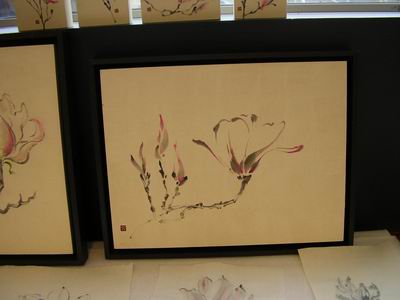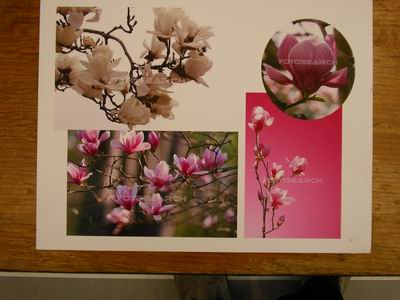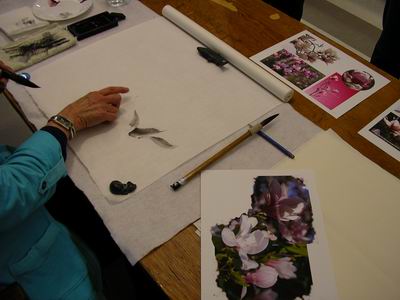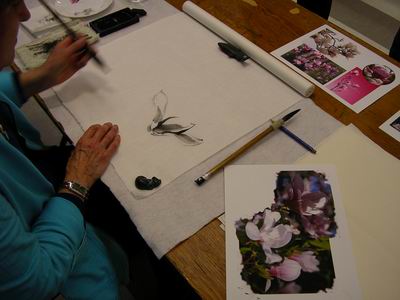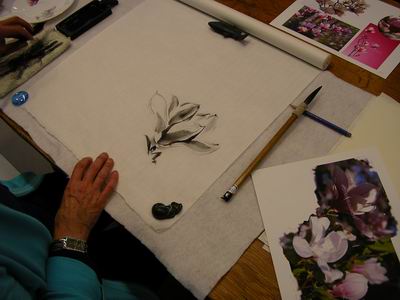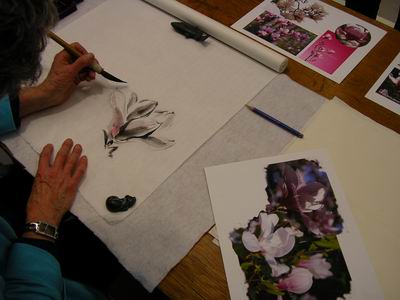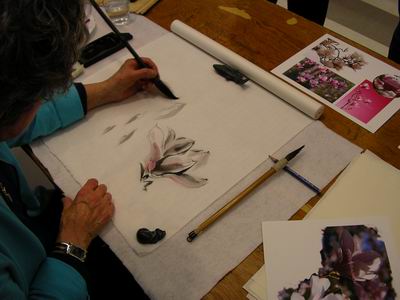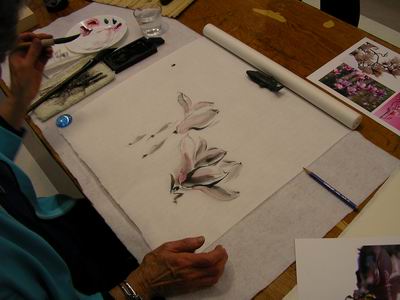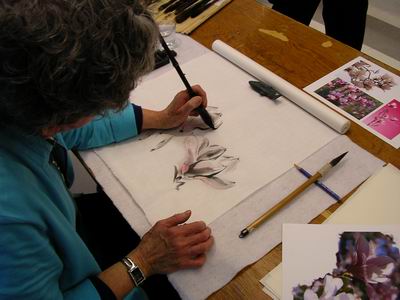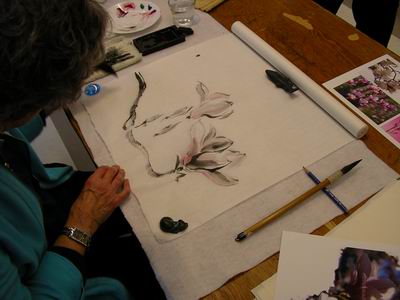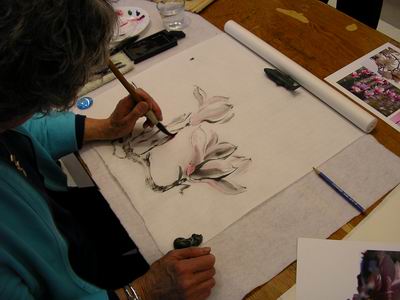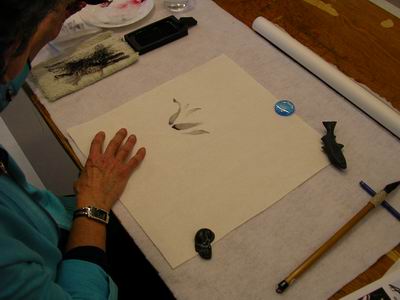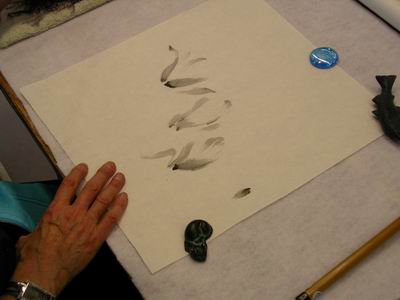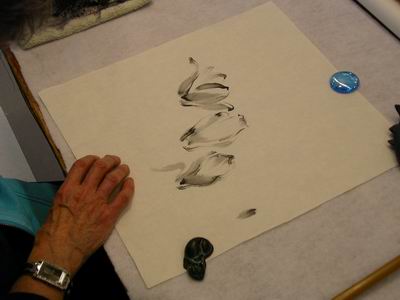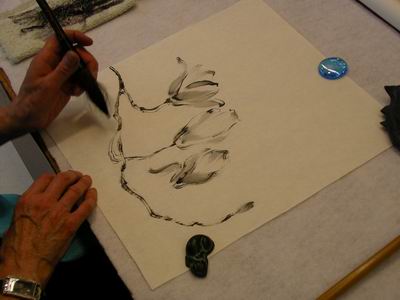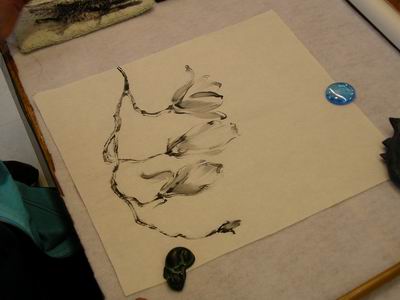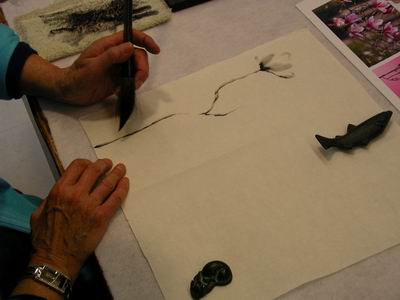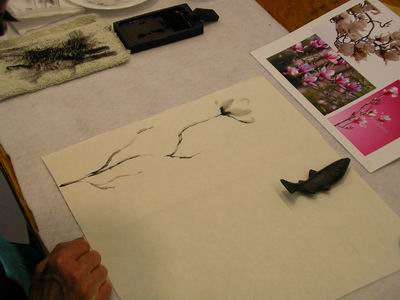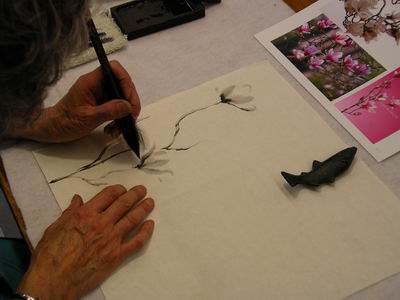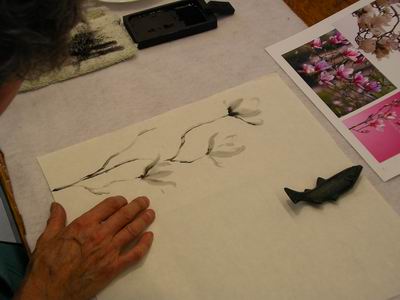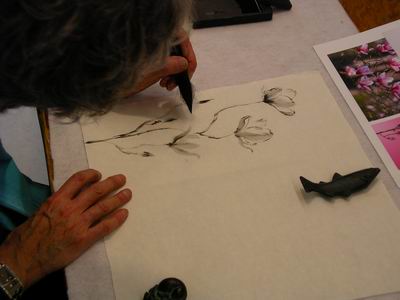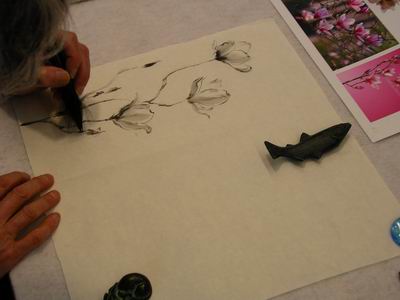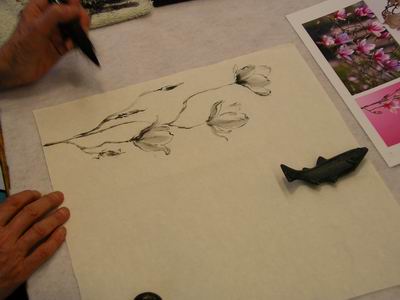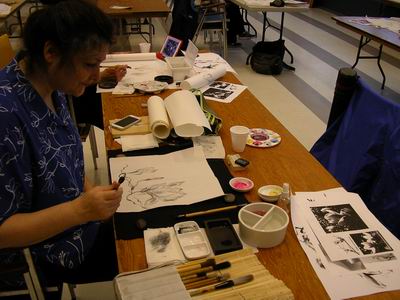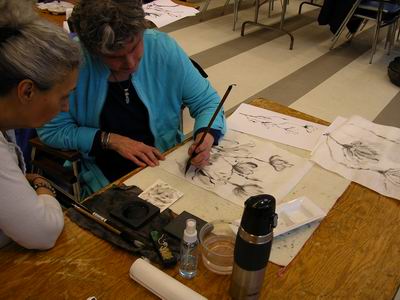Magnolias with Roslyn Levin - May 14th, 2016
Think spring and you think magnolias. You wait and wait and wait, and then they appear in spectacular fashion for one week! Roslyn Levin began her workshop by showing us some of her own magnolia paintings.
On the Internet, there are lots of pictures of magnolias though Roslyn Levin cautioned the artists attending the workshop that no one should slavishly follow these images. Photos are good for a starting point.
The challenge of painting magnolias is that the petals are very light. Roslyn Levin's approach was to start with the shaded, slightly darker part of the petals.
Then came the edges of the petals in both light and dark ink. Roslyn did not outline every edge of the petals.
Turning to the calyx at the base of this magnolia with its own leaves called sepals, Roslyn highlighted the structure supporting the flower.
Pink was added in a subdued way. The magnolia is for the most part very light and you must create it in such a way that you can see or imagine the outer petals and also get a sense of the inner, hidden part of the flower.
Another flower was added and some buds.
With magnolias as with any painting, the composition improves as variety is added.
Roslyn Levin worked mostly with a brush with little ink. This meant she could add darker lines to define the image without ink spreading.
A branch tied the two flowers together. Roslyn Levin used pressure and twists of the brush to create a branch that seemed very natural.
A few more touches of pink made the magnolia life like and appealing to the eye.
The next painting began in a similar way by focusing on the petals first.
Again Roslyn Levin looked at the shaded part of the leaves.
The inner parts of the flower were left untouched, suggesting a space within.
A vine-like branch tied these magnolias together.
Like the previous painting, the composition consisted of several flowers that Roslyn Levin captured at different points of their development.
The next magnolia began with the flower at the top and then a straight branch underneath.
Then the other branches were added, leaving room for other magnolias. This painting was the reverse of the previous ones as the branches were added first. Roslyn Levin did not have a formula for creating a painting with magnolias. Flowers or branches can be created first.
Than came another flower.
And one more flower.
Buds were added. Mixing flowers at different states of development in your painting makes the work more realistic and interesting.
Roslyn Levin balanced the painting with smaller flowers and buds.
This painting did not have colour, but the magnolias were vivid to the eye.
Then it was our turn to try working on the delicate magnolias.
However, Roslyn Levin did come around to help with some valued pointers.
You can learn more about Roslyn Levin in the links section.
